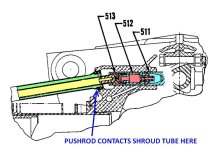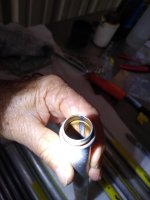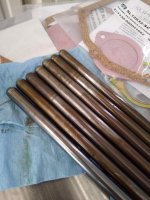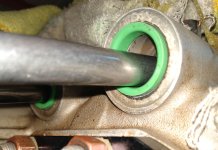Installing new Superior cylinders on a Superior XP-320 and noticed something interesting. The pushrods are contacting the inside of the shroud tube at the end where they enter the case spigots. See below.
This is a roller engine, first generation lifters with snap ring bodies. Seems like an obvious geometry issue, but why? First guess would be the hydraulic units were operating flat all the time, but that seems highly unlikely, and anyway, the design geometry should accommodate it. Valve spring pressure pushes a few lifters flat every time the engine is shut down.
I have a call in to Bill Ross, but we may as well speculate over the weekend
The drawing below is from the Lycoming manual. Don't be confused; I'm merely illustrating where the contact is taking place...6 o'clock in the shroud tube.
.
This is a roller engine, first generation lifters with snap ring bodies. Seems like an obvious geometry issue, but why? First guess would be the hydraulic units were operating flat all the time, but that seems highly unlikely, and anyway, the design geometry should accommodate it. Valve spring pressure pushes a few lifters flat every time the engine is shut down.
I have a call in to Bill Ross, but we may as well speculate over the weekend
The drawing below is from the Lycoming manual. Don't be confused; I'm merely illustrating where the contact is taking place...6 o'clock in the shroud tube.
.








